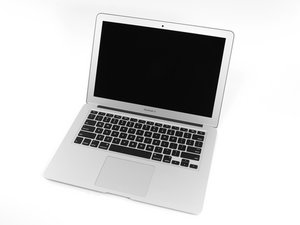Disk not recognized after logicboard replacement, but SSD is fine
I have a 2013 Macbook Air and I bought a logicboard that was either exactly what I had or close. (I couldn’t remember the precise ghz or RAM.) Installed it with the help of ifixit, seemed fine, but when I try to boot up, I get a flashing folder with a question mark. I can’t boot into safe mode and select a start-up disk, my only option is Internet Recovery…
- Once I get to those options and I go to Repair, I am able to see my desk and verify it. The verification process says it’s OK. I repaired it anyway and it didn’t do anything…
- Then if I try to reinstall OS X, it asks me where to install Mountain Lion but there are no disks to choose from so I have to exit out of it.
- If I try to to restore a Time Machine backup, it can’t find any.
- If I try to change my startup disk, there are no disks listed. My only option left is to shut down.
So, my disk is there and the Macbook sees it in the Repair utility but nowhere else. I also removed the SSD from the laptop and plugged it via USB into a spare 2012 Macbook Air with a chassis I bought, and I am able to boot up from it on the other Macbook Air, so I know the drive works and boots up. SMC and PRAM reset didn’t work.
I don’t remember which version of OS X I had installed on my Macbook Air before I killed the logicboard (I can check if it matters, I think), and I don’t know what OS this used logicboard had, so I don’t know if there could be a communication mismatch, but I am at a loss on what to do next. I have a slow 2012 Macbook Air and a Windows 10 PC at my disposal to try to make this work. I’m just not good with Macs. Thank you!
Update (08/22/2021)
So, it was a bit of a headache, but I finally got my Macbook Air working with @danj’s instructions. I did try to just use a blank USB (after having to figure out how to properly format the drive) and go through the internet recovery prompts to install Mountain Lion and then upgrade. It started OK, I got Mountain Lion installed, but it could not upgrade for some reason and I was getting error messages at the end, something about the wrong firmware - I don’t even remember. So then I decided to just try to do a High Sierra bootable USB, but the version of High Sierra that Apple provided in the Apple Store was not the full installer (a known problem), so it wouldn’t work. The recommendation I saw to get the correct High Sierra installer was via non-Apple sources, so I opted not to do that and go a safer route. So then I tried Mojave, as Dan recommend, and I kept getting error messages during installation. First the disk was “locked” and I couldn’t figure out how to unlock it. So I got a second USB to finish the process with a disk that was not locked, and then I kept getting an error message saying “the installer resources were not found.” I kept trying, and I put my internal SSD inside the laptop, and somehow after like three times it worked and installed Mojave off the one USB and onto the other USB. Once Mojave was installed on the USB, I shut it down, removed the USB drives and tried to boot off the internal SSD and voila, my Macbook Air was alive again running High Sierra and looking exactly as it did before I dropped it in the sink.
It was a headache and took all day because of all the random errors I kept encountering, and it required a lot of googling instructions and trial-and-error, but eventually it worked. The issue was definitely 100% that my SSD was formatted as APFS and the logic board I put in there only recognized HFS. Apple switched over from HFS to APFS with the introduction of High Sierra, so “teaching” my logicboard how to recognize APFS by getting High Sierra or later installed was the solution. For anyone who sees this, as long as you can find a way to do that, you’ll be all set.
Ist dies eine gute Frage?

 2
2 
 329
329  971
971